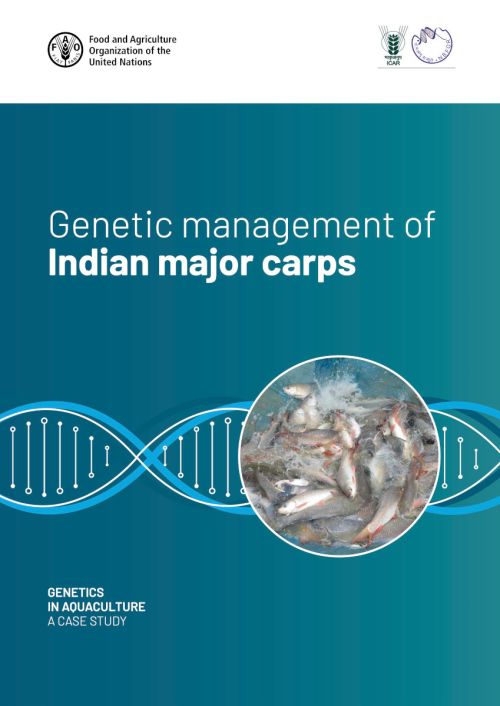Genetic management of Indian major carps
25 September 2023 | Lal K.K., Kumar A., Kumar S., Charan R., Mohindra V., Lucente, D., Singh R. K., Basheer V.S., Kathirvelpandian A., Singh R., Sarma D., Jena J.K., and Mair G.C. | 618 Downloads | .pdf | 7.34 MB | Freshwater finfish, Genetics and Biodiversity, Hatchery and nursery, Inland aquaculture, India
Collectively carps represent the largest global aquaculture sector, contributing over 20 percent of global aquaculture production. The Indian major carps including catla (Catla catla), rohu (Labeo rohita) and mrigal (Cirhinnus mrigala) are cultured widely across the Indian sub-continent with the main culture system being a multi-species polyculture in ponds, often including other carp species such as common carp (Cyprinus carpio). This production sector is supported by major seed supply systems producing over 50 billion seed per annum. This case study analyses genetic management of Indian major carps since they were first domesticated with the development of hypophysation techniques in the 1950s. A review of literature and a survey of common hatchery practices identifies significant problems prevalent in the sector brought about by a lack of application of best practices in genetic management resulting in loss of genetic diversity, inbreeding and uncontrolled hybrid introgression.
These practices are likely to be impacting negatively on the productivity of the cultured farmed types and will represent a significant challenge to the sector in the long term. This case study identifies some of the root causes of poor genetic management and identifies some of the practices that could bring about an improvement in hatchery management to ensure more sustainable use of these globally important aquaculture species.
Creative Commons Attribution-NonCommercial-ShareAlike.

